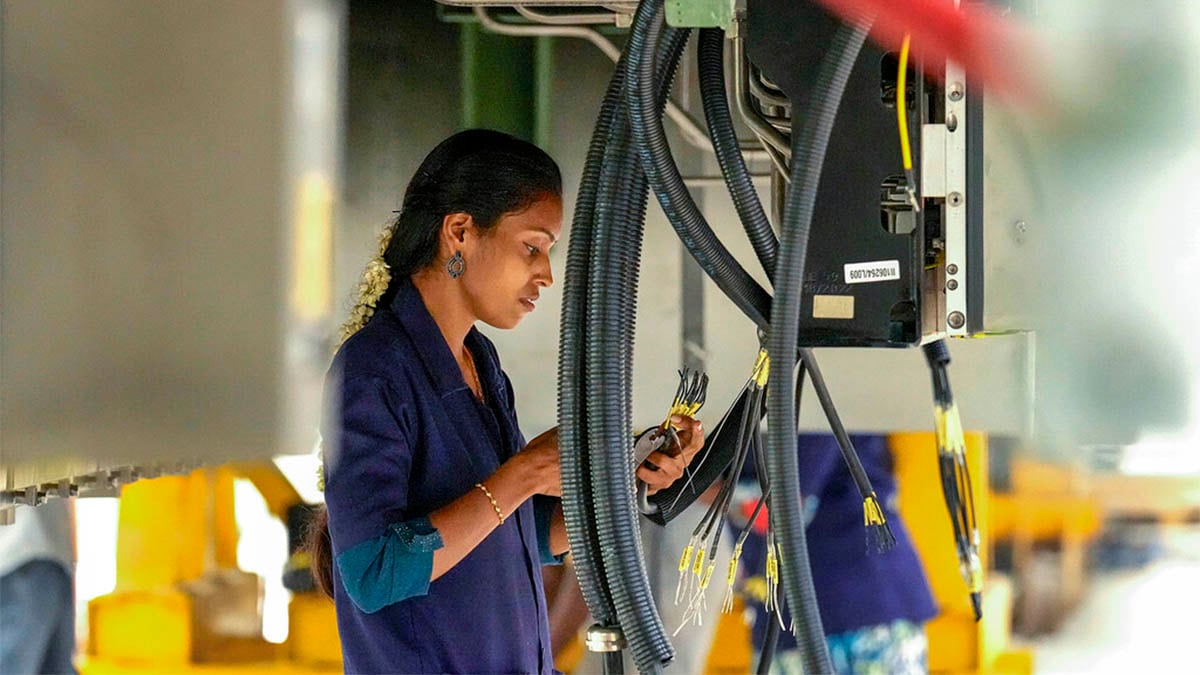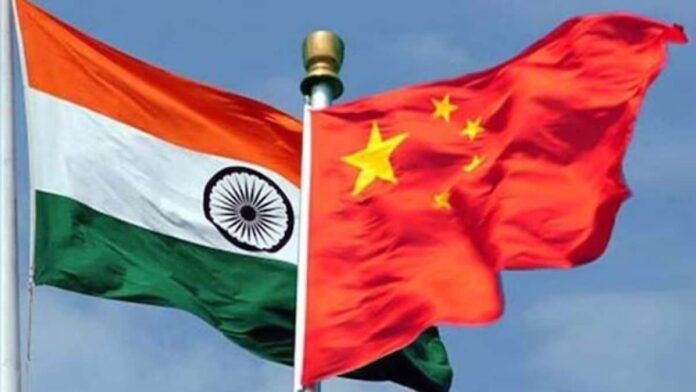US President Donald Trump’s tariffs on China may benefit India.
Trump this week increased the tariffs on China to 245 per cent due to its retaliatory actions.
Beijing, which has vowed to fight to the finish against America, had earlier levied a 125 per cent tariff on Washington.
It has said it is not interested in playing ‘the tariff numbers game’ against America.
China last week also filed a new complaint with the World Trade Organisation expressing “grave concern” over US tariffs, accusing Washington of violating the global trade body’s rules.
STORY CONTINUES BELOW THIS AD
But how will Trump’s tariffs on China benefit India? Why does China need India?
Let’s take a closer look
Will Trump’s tariffs on China benefit India?
According to a report in Economic Times, Chinese firms are saying they are willing to follow India’s rules and regulations as long as they get access to the market.
The report quoted people familiar with the matter as saying that firms such as the Shanghai Highly Group and Haier have agreed to terms for a minority stake in joint ventures.
This is a U-turn from their earlier stance when they were unwilling to do so.
The reported quoted sources as saying that Chinese companies want to be able to do business in India in case their access to the US market is cut off.
Shanghai Highly is communicating with the Tata-owned Voltas for a manufacturing joint venture.
The firm, one of the largest compressor manufacturers in China, is now open to a minority stake, people familiar with the matter said.
Shanghai Highly is even open to cooperating when it comes to technology.
The Indian government banned a joint venture between Voltas and Shanghai Highly a couple of years ago.
Shanghai Highly had proposed taking ownership of 60 per cent of the JV.
As per Business Today, Haier, one of the most popular electronics companies in India, has agreed to sell a majority stake in its domestic operations.
STORY CONTINUES BELOW THIS AD
Haier is in communications with several Indian companies and private equity funds.
It is looking to offload a stake of between 51 and 55 per cent.
Haier was previously looking to sell a minority stake of up to 26 per cent.
Companies offering discounts
The Times of India reported that Chinese electronics components manufacturers are also willing to give Indian companies a discount of up to five per cent.
This is a big deal because the entire industry operates on margins of just four to seven per cent.
The Indian manufacturers, in turn, could pass on some of the lower costs to consumers.
Three-fourths of all parts used in electronics products in India come from China.
As per data from by the Commerce Ministry, imports from China increased to a record high of $113.45 billion over the past financial year.

“Component manufacturers in China are under pressure,” Kamal Nandi, head of the appliance business at Godrej Enterprises Group, told The Times of India. “Prices will be renegotiated as export orders from the US slow down.”
Avneet Singh Marwah, chief executive of television contract manufacturer Super Plastronics, said Chinese companies are facing a glut of supply.
STORY CONTINUES BELOW THIS AD
“There is panic. US export shipments from China are on hold. Indian companies and Chinese part makers are negotiating to lower prices by up to five per cent,” said Marwah. “However, since domestic demand in India is not robust, companies may pass some as discounts.”
The US in 2024 imported electronics worth $127.06 billion from China.
Experts say there is a sea-change when it comes to India in the attitude of Chinese firms.
“There is a complete change in attitude of the Chinese companies, who are now extremely comfortable to own minority ownership in an Indian joint venture or form technical alliance,” Rajesh Agarwal, director at Bhagwati Products, a telecom and electronics contract manufacturer, told Economic Times.
“Chinese companies don’t want to lose business since India is a big market and there is scope for exports under the tariff regime. The icing on the cake is the PLI scheme, which will make production cost neutral as compared to China.”
STORY CONTINUES BELOW THIS AD
India could be well-positioned to take advantage of the moment.
Container traffic plunging
The development comes as container traffic from China to the US is plunging.
As per SCMP, cargo bookings for the next few weeks are reported to be down 30-60 per cent in China and 10-20 per cent in the rest of Asia.
“The US-China standoff continues to keep container market sentiment poor with US tariff concessions far from sufficient to restore transpacific volumes,” Linerlytica said in a note on Tuesday.
“All US importers getting cargo from anywhere but China are sure to fast-track volume in the next three months, to get their peak-season goods through customs before the July 9 deadline,” Sea-Intelligence said.
India monitoring Chinese dumping
Meanwhile, the government has set up an inter-ministerial import surge monitoring group as high tariffs on certain countries like China and Vietnam may lead to diversion of goods to India, the commerce ministry said.
It also said that Chinese retaliatory tariffs on US goods could further increase the inflow of US agricultural products into India.
“With the global uncertainties related to tariffs, obviously there are elevated apprehensions related to likely flooding or surge in imports or surge…to look at that…import surge monitoring group has been set up,” Additional Secretary in the Department of Commerce L Satya said.
STORY CONTINUES BELOW THIS AD
If any unusual surge is reported, the commerce ministry can take action such as imposing anti-dumping or safeguard duties.
The group, he said, is monitoring weekly as well as monthly trends by commodities and by countries.
“If there is any unusual surge, we would like to understand the reasons,” he added.
According to the ministry, a recent assessment highlighted the risk of merchandise dumping into India due to reciprocal tariffs amid global trade tensions.
“Rising US costs may prompt exporters from countries like China, Vietnam and Indonesia, all facing US trade deficits to divert goods to India, potentially triggering import surges,” it said.
With inputs from agencies



